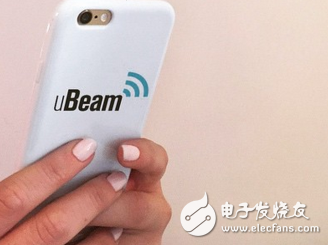Wireless charging has been very hot in the past few years, but the popularity of previous predictions has not come, which is likely to be related to wireless charging requiring short distance or even contact to charge. Wireless charging is not as practical as imagined. And today's new technology may save the entire wireless charging market. A company called uBeam invented a new wireless charging mode that uses ultrasound to transport power to a distance of 15 feet (about 4.6 meters). With such a product, you can use your mobile phone to walk around the house while charging while using a dedicated wireless charging kit. Although uBeam's prototype is still cumbersome, the company is working hard to reduce its size and bring it to market as soon as possible.

It is reported that many companies have hoped to reach a strategic cooperation with uBeam to provide customers with such wireless space charging services to attract more passengers, including Starbucks, Virgin Atlantic, Starwood Hotels and a number of fast food chains. In addition, uBeam has also communicated with hardware vendors such as Apple and Samsung. Venture capitalists also seem to see opportunities: People familiar with the matter said the company hopes to seek a total of $50 million in Series B financing, with a valuation likely to reach or exceed $500 million. But uBeam declined to comment. The company received a $10 million Series A financing led by Upfront Ventures in October last year, and previously received $3.2 million in seed investments from companies such as Andreessen Horowitz and Founders Fund. Many companies have tried real wireless charging before, but most of them failed, and only magnetic resonance charging was achieved. This mode must bring the device close to the transmitter or even directly to the transmitter, so there is no major breakthrough compared to plug-in charging.
uBeam early prototype
However, the endorsements of many big-name investors indicate that uBeam's wireless charging model may have great potential. Specifically, uBeam uses ultrasound-conducting technology, where the transmitter takes power through a socket or building's electrical system, then converts it into ultrasound, and then transmits the vibration to the built-in receiver—for example, with a wireless charging sleeve. After the mobile phone and the receiver are responsible for converting the ultrasonic vibration into electric power, charging the mobile device. uBeam says that this mode has a charging speed similar to that of a conventional power supply. This ultrasonic space charging method has several advantages. First of all, this technique is very safe, and it uses ultrasound similar to the ultrasound used to monitor the fetus. In addition, the price of the receiver is also very cheap, about $50, or even lower, and small size. Not only that, but these ultrasounds can also be used to transmit data, so uBeam can also play a role in the Internet of Things.

But what appeals to the average user is that the technology has an effective range of about 15 feet and is equally effective for moving devices. Although smartphones have made significant progress in terms of size and performance, battery life has not improved much, which not only undermines the user experience, but also hinders the development of the entire mobile economy. Therefore, uBeam's technology may contribute to the entire industry. Technology giants such as Apple and Samsung are working hard to solve the charging problem, but they have not made progress. Therefore, they are likely to purchase uBeam. Since uBeam holds a number of important wireless charging patents, these giants may acquire the company at a premium to avoid important technology falling into the hands of competitors.
In the long run, if uBeam's wireless charging protocol really realizes its potential, it means that the wires will gradually disappear. Not only mobile phones, but also other types of electrical equipment will use this technology. It needs to be clear that uBeam is still overcoming some serious technical challenges, and the final product may not be able to meet expectations in terms of price, power, speed and safety. However, if it can really achieve market expectations, it will become a revolutionary technology, which is the result of investors' dreams.
Piezo Transducer,Piezo Audio Transducer,Piezoceramic Transducer,Piezo Pressure Transducer
NINGBO SANCO ELECTRONICS CO., LTD. , https://www.sancobuzzer.com